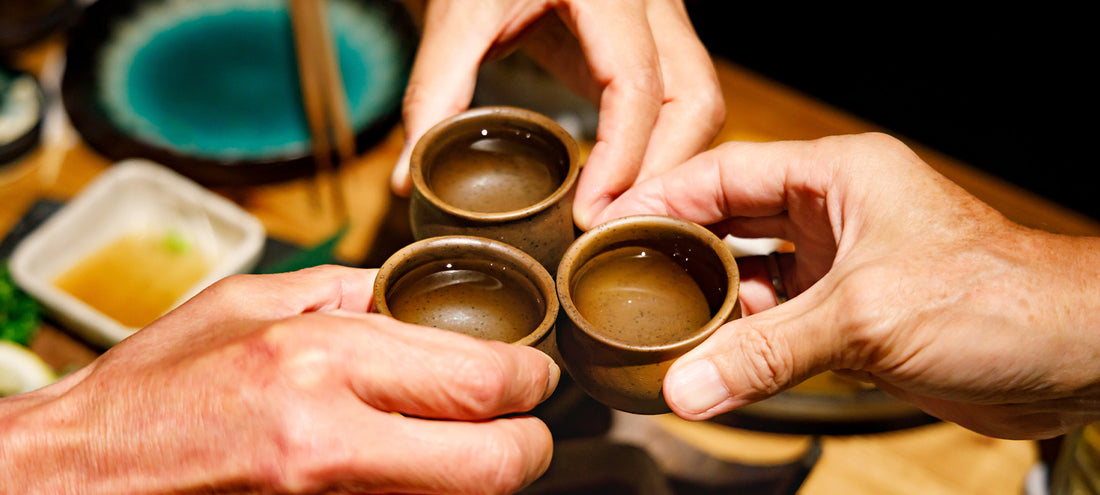Sake spelt Sake but pronounced Sah Key is Japan’s national beverage. You might think that is a really hard category to understand but even more common beverages in India like wine seemed liked a puzzle before you go into it not too long ago. So, for now we get into basics to get your Sake lingo going.
Sake very simply is made from highly polished rice, water, Koji (rice mold) and yeast. Made via fermentation and then filtration much like wine and beer. The polishing of the rice is important. The more it is polished, the higher the grade of the sake. Most have an alcohol content of about 15 to 18%. Some may have more. The Sake buzz can catch up on you so don’t treat this like a mild beverage. All you whisky guys snickering out there don’t under estimate this one.

Usually served in a small cup and a small jar like thing. Sake has always been ceremonial. In fact I love the ceremony when I’m hosting myself. You never pour yourself a glass and when someone pours for you, you tilt the glass towards them. You pour sake into the glass of the person that has poured yours. Raise a toast by saying Kanpair and then you take sip sake like you would wine for example. Further into the evening you let go of ceremony and continue with sake bombs but that another story.

In Japan I came across a curious way of serving that I only understood later. They put a shot glass like container on a small wooden square box called Masu with the top open. They then proceed to pour the sake in the glass and let it overflow into the small open wooden box. Once done with the glass you drink from the box. They let it overflow as a gesture of generosity. You got to love the Japanese way of thinking.
This is usually done in more casual places rather than serious bars or restaurants.

Sake’s can be dry or have degrees of sweetness, can be lighter or heavier and can display a range of aromas and flavours, the more you experiment the higher the chances of you finding what you like. Sake producers even produce their sake in different styles based on the regional cuisine available to them in Japan.
Sake is fantastic for drinking on its own but it really does pair perfectly with cuisines from across the world, you don’t necessarily have to limit it to Japanese food. Drink your sake at a cool temperature to bring out delicate aromas, never cold and never hot but perhaps in some cases warm. Most are however served cool.
Some classifications that you should familiarize yourself with -
- Ginjo – 60% to 50% of rice remaining after polish, this is good Sake.
- Daiginjo – less than 50% of rice remaining after polish, sometimes even down to 35% – this is seriously good sake

The outer layer of rice can make the sake taste heavier and bitter and therefore the more it is polished the more refined, cleaner and lighter the sake is. Adding alcohol is a practice in sake because it reduces costs. Whether alcohol has been added or not can be seen by the following wordings on the bottle –
- Junmai – not added
- Honjozo – limited amount of alcohol added
So you might find a Sake bottle that Junmai Daiginjo which tells you that this sake has not additional alcohol added and that the rice grain has been polished to 50% or less. See now your learning and it isn’t so hard.
The majority of the sake available today is made with alcohol added however Junmai is considered purer and of higher quality and taste.
Another classification to describe sake is based on whether the sake has been pasteurized at bottling - Namachozo or not pasteurized – Nama.
Pasteurization is done to retain the flavour of the sake by killing enzymes that would change the character of the sake. Nama Sakes are fresher but need to be treated with care.
Genshu denotes that the sake has been diluted with water. Nigori denotes a cloudy sake. A cloudy sake is not a fault it’s a style.
So the next time you’re at an Izakaya or your favourite Japanese restaurant order from your favourite Kura/Sakagura – a sake brewery and read their sake offering and order like a true Toji – master brewer!


